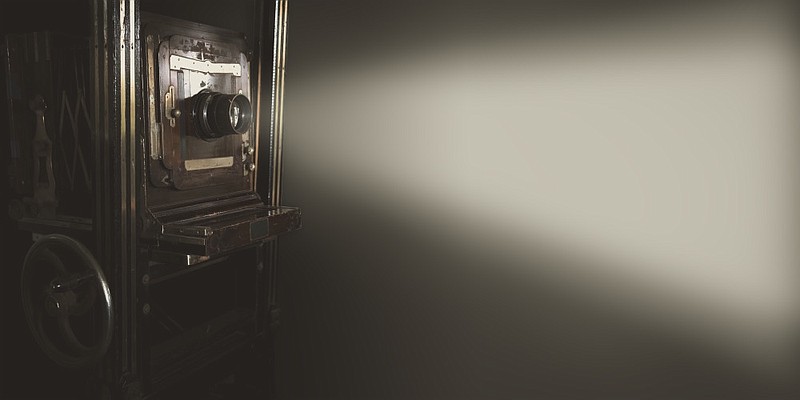When the Rogers Theatre opened on March 2, 1951, in the 900 block of Market Street near the Chattanooga Steak House, Krystal and Lawrence Furniture, Hollywood stars Ginger Rogers, Charlton Heston and Alan Ladd sent congratulations to Emmett Raymond Rogers.
Named in honor of a veteran Chattanooga personality known for his movie magic in posters, colorful lobby displays and promotions, the new theatre had 1,250 seats. The Rogers' first movie, "Three Guys Named Mike," featured Jane Wyman, Van Johnson, Howard Keel, and Barry Sullivan and was preceded by a Bugs Bunny cartoon and a Rogers newsreel.
Born in 1891 in Chattanooga, Rogers wanted to be an artist. His first drawing appeared in The Chattanooga Times at age 14. He graduated from Chattanooga High School in 1909 and the Chicago Art Institute in 1912 before returning home to create art and write stories for The Times. A year later he took a job with Signal Amusement Co., where he was in charge of art and publicity at the Tivoli Theatre when it opened in March 1921. He became its first manager.
LEARN MORE
The Chattanooga Public Library has three scrapbooks assembled by Emmett Rogers that include photos of his lobby displays, news articles on his theater promotions and sketches of various posters.This memorabilia raises the curtain on Chattanooga’s silent film era. It can be viewed at the Local History and Genealogy Department of the Library at 1001 Broad St.
From then on, Rogers used his talents exclusively to promote the silver screen. In 1923, Rogers became district manager for the Famous Players-Lasky Corp., which operated theaters in most of the major cities in the U.S. Famous Players became Paramount Publix, which evolved into Wilby-Kincey Service Corp. Rogers supervised movie operations covering Georgia, Alabama, Tennessee and Virginia. By 1957, Rogers was adviser to Eastern Theatres, owners of the Tivoli and Rogers.
Rogers' innovative styles spread to theaters across the country. R.W. Wilby commented when the Rogers Theatre opened: "He has had a very great part in the development of the motion picture theater from the day of the 'store show' to the present standards. While most of the time his residence has been in Chattanooga, his actual influence upon the industry has been country-wide."
Trade publications, including 'Moving Picture World" and "Motion Picture News" printed photos and articles on Rogers' endeavors. He introduced to the South the first poster work in the lobbies; the first elaborate lobby displays and theater fronts; and the first uniformed ushers. He also made the first use of pipe organs, pit orchestras and stage presentations, all part of the early silent film era. Rogers used his artistic skill to design sets and movie posters for the Tivoli and Rialto theaters and oversaw their newspaper advertisements.
Rogers' sense of theatrics and use of local talent made his prologues memorable to his audiences. (Prologues were short dramatic scenes linked to the film's subjects performed before the film.) The prologue for "The Faith Healer" opened with the healer walking across the stage and listening to a whistling bird. A boy on crutches approached the healer, and a beam of light shone on both the healer and the boy. As the healer worked his miracle, a local singer performed "My Faith Looks up to Thee," attesting to the strength of the healer's faith and love.
"Motion Picture News" declared Emmett Rogers' lobby display at the Rialto Theatre at 709 Market St. in 1921 for the silent film "Isobel: A Romance of the Northern Trail or Icebound Hearts" "simple but effective." The film was based on James Curwood's 1913 book of the same name, its setting in a Canadian forest. The lobby floor was covered in four inches of white sand, and the side walls were banked with real trees dipped in white alabastrine. Rogers installed blue lights overhead, and three purple spotlights added to the contrast of blue and white. He spent $95 to further enhance the "snowy" scenery; that investment raised receipts around 40%.
He created an Alaskan saloon in the Rialto lobby for the 1921 movie "Idol of the North," a story of a young bar girl who married against her will but eventually found happiness. "Moving Picture World" wrote that the lobby "made more talk and got more money." Rogers excelled in the art of selling the picture during the early silent film times. He died in 1960.
Suzette Raney is the archivist at the Chattanooga Library's local history department. Contact her at 423-643-7725. For more, visit Chattahistoricalassoc.org.
